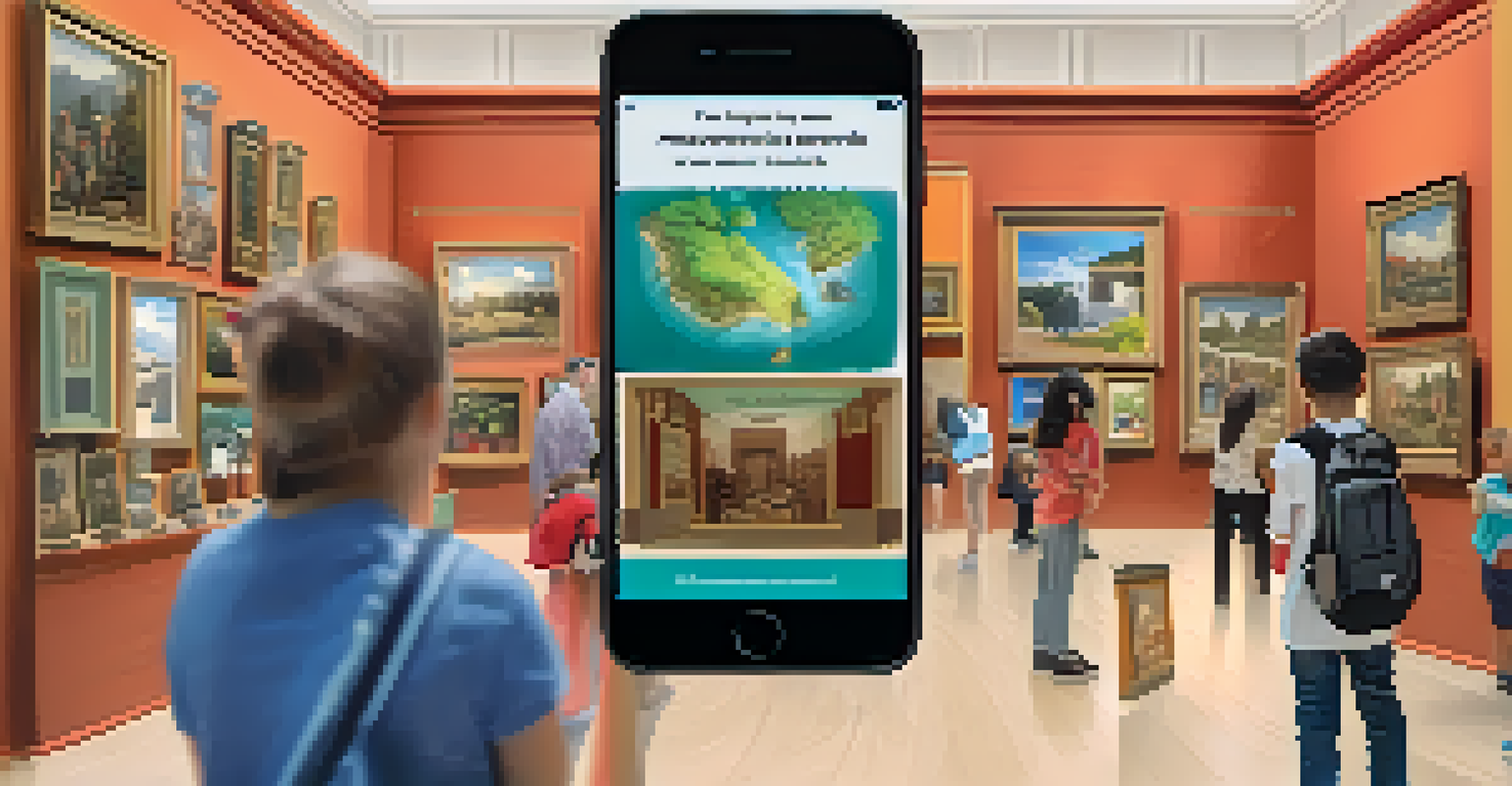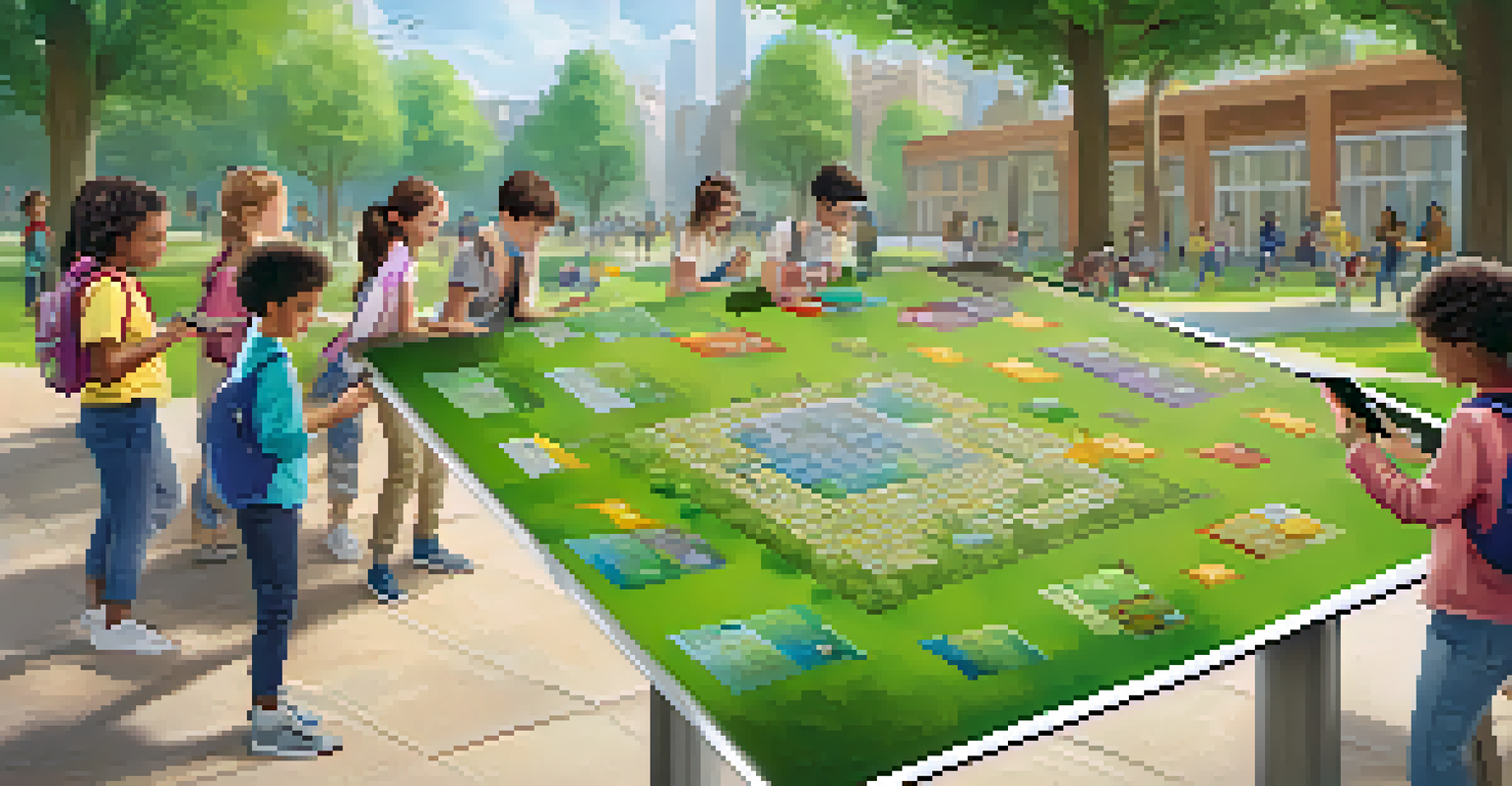Gamification of Learning: AR as a Motivational Tool

Understanding Gamification in Learning Environments
Gamification involves incorporating game-like elements into non-game contexts, such as education. This approach boosts engagement and motivation by tapping into our natural love for competition and achievement. Think of it as turning a boring task into an exciting challenge, much like leveling up in a video game.
Gamification is a way to make learning more engaging by creating a sense of play.
In the realm of education, gamification can take various forms, including points, badges, and leaderboards. These elements create a sense of accomplishment and encourage students to participate actively. By making learning feel more like play, students are more likely to retain information and enjoy the process.
Gamification isn't just a trend; it's backed by research showing that it can improve learning outcomes. When students feel motivated, they are more likely to take risks and explore new concepts, leading to deeper understanding and retention. This shift in mindset can be transformative for both learners and educators.
The Role of Augmented Reality in Education
Augmented Reality (AR) enhances the real world by overlaying digital information, creating immersive learning experiences. Imagine studying biology and being able to see a 3D model of a human heart right on your desk. This level of interaction not only captivates students' attention but also deepens their understanding of complex subjects.

AR brings abstract concepts to life, allowing learners to visualize and manipulate information in real time. For instance, students can explore historical sites through their devices, connecting them to the material in a way that textbooks alone cannot achieve. This experiential learning fosters curiosity and a desire to explore further.
Gamification Enhances Learning
Incorporating game-like elements into education boosts student engagement and retention by making learning feel more like play.
The integration of AR in educational settings opens up a world of possibilities. It can be used in various subjects, from science to art, making learning more accessible and enjoyable. The key is to leverage AR's capabilities to complement traditional teaching methods, ensuring a well-rounded educational experience.
How AR Gamification Boosts Student Engagement
AR gamification elevates student engagement by creating a dynamic learning environment. When students are actively involved in their learning, they are more likely to stay focused and retain information. This engagement is often achieved through challenges, quests, or interactive scenarios that require critical thinking and problem-solving.
Augmented reality is the next big thing in education, bridging the gap between the digital and physical worlds.
For example, a math lesson could transform into a treasure hunt where students solve equations to find hidden items in their surroundings. This not only makes learning fun but also encourages collaboration among peers as they work together to achieve a common goal. The social aspect can enhance motivation even further.
When students see learning as an adventure rather than a chore, their enthusiasm skyrockets. AR gamification helps break down barriers, allowing learners to explore topics that may have previously seemed daunting. This shift in perspective can lead to a lifelong love of learning.
Implementing AR Gamification in Classrooms
Integrating AR gamification into classrooms may seem daunting, but it can be done in simple steps. First, educators should identify learning objectives and determine how AR can enhance those goals. It’s crucial to start small, perhaps with a single lesson or project, to test the waters and gauge student reactions.
Once the foundation is set, teachers can explore various AR tools and platforms available today. Many applications are user-friendly and require minimal technical expertise, making them accessible for educators. Collaborating with tech-savvy colleagues or students can also help ease the implementation process.
AR Creates Immersive Experiences
Augmented Reality enriches learning by allowing students to visualize complex concepts and interact with digital information in real time.
Feedback from students is invaluable during this phase. Encouraging them to share their experiences can guide future improvements and adaptations. By cultivating an open dialogue, educators can refine their approach and ensure that AR gamification remains a relevant and effective tool for learning.
Case Studies of Successful AR Gamification
Numerous schools and organizations have successfully implemented AR gamification, showcasing its potential. For instance, a school in California introduced an AR app that allowed students to explore the solar system interactively. This project not only made the learning process enjoyable but also resulted in improved test scores and student enthusiasm.
Another example comes from an international museum that developed an AR scavenger hunt. Visitors used their smartphones to find hidden artifacts and learn about their history. This innovative approach increased visitor engagement and made the experience more memorable, illustrating how AR can enhance learning outside traditional classroom settings.
These case studies highlight that AR gamification is not just theoretical; it's practical and effective. By sharing success stories, educators can inspire each other to embrace these technologies and create enriching learning experiences for their students.
Challenges and Considerations in AR Gamification
While AR gamification presents exciting opportunities, it also comes with challenges that educators must navigate. One significant concern is the accessibility of technology. Not all students may have access to the necessary devices or robust internet connections, which could create disparities in learning experiences.
Additionally, there can be a learning curve for both students and teachers when adopting new technologies. Training sessions or workshops are often essential to ensure everyone feels comfortable and equipped to use AR tools effectively. It's important to approach these challenges with patience and an open mind.
Challenges in Implementing AR
While AR gamification offers exciting opportunities, educators must address technology accessibility and find a balance between fun and educational content.
Finally, educators should remain mindful of the balance between fun and learning. While gamification is meant to engage, it should not overshadow the educational content. Striking the right balance ensures that students not only enjoy their learning experience but also achieve the desired educational outcomes.
The Future of AR Gamification in Education
As technology continues to evolve, the future of AR gamification in education looks promising. With advancements in AR capabilities, we can expect even more immersive and interactive learning experiences. Imagine virtual field trips to historical events or interactive science labs right in the classroom—possibilities are endless!
Furthermore, as educators become more familiar with AR tools, we will likely see a rise in innovative teaching methods that blend traditional approaches with gamification. This evolution will contribute to more personalized learning experiences, catering to diverse learning styles and needs.

Ultimately, the future of AR gamification hinges on collaboration among educators, tech developers, and students. By working together, we can create a more engaging and effective educational landscape, fostering a generation of curious and motivated learners prepared for the challenges ahead.